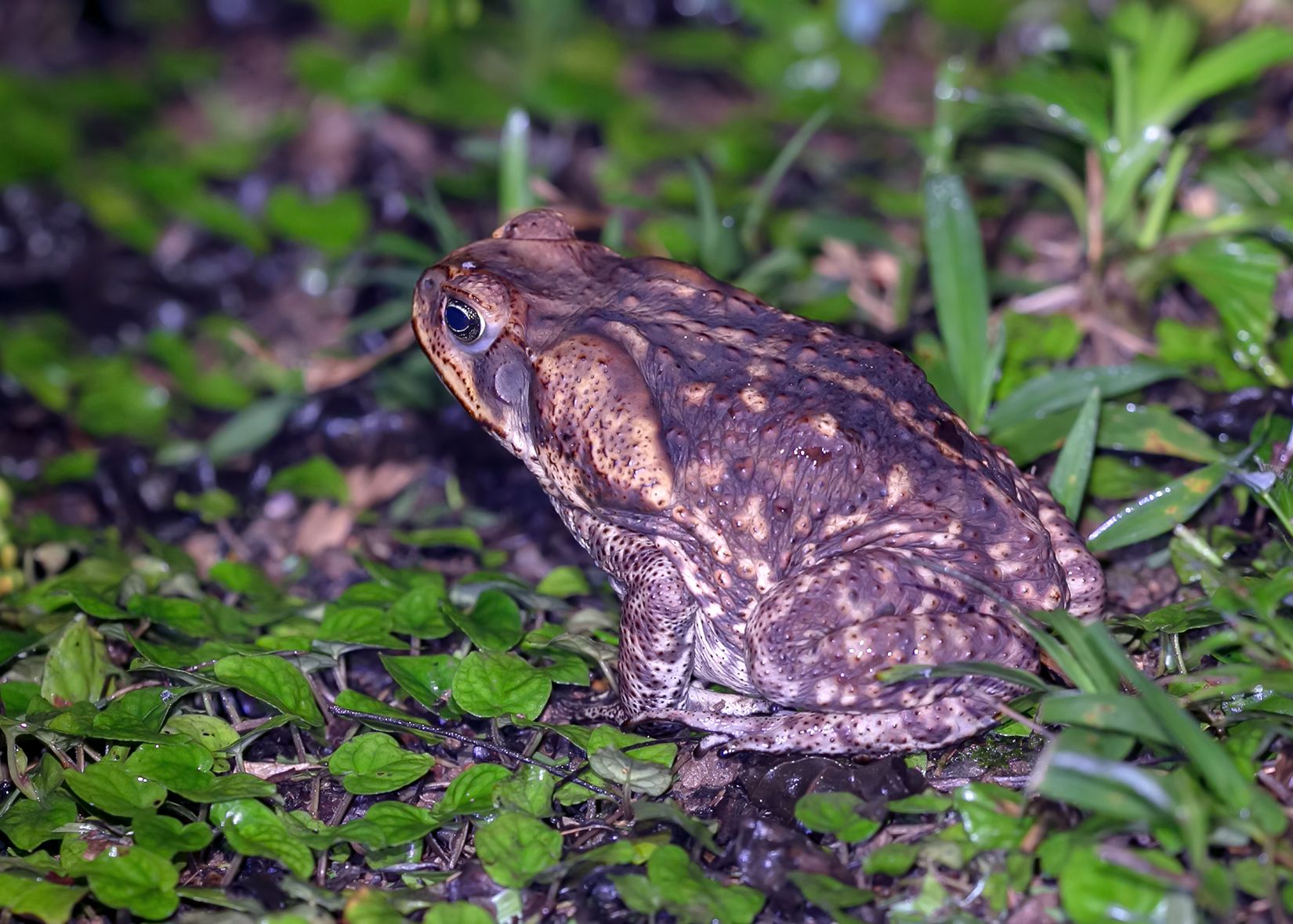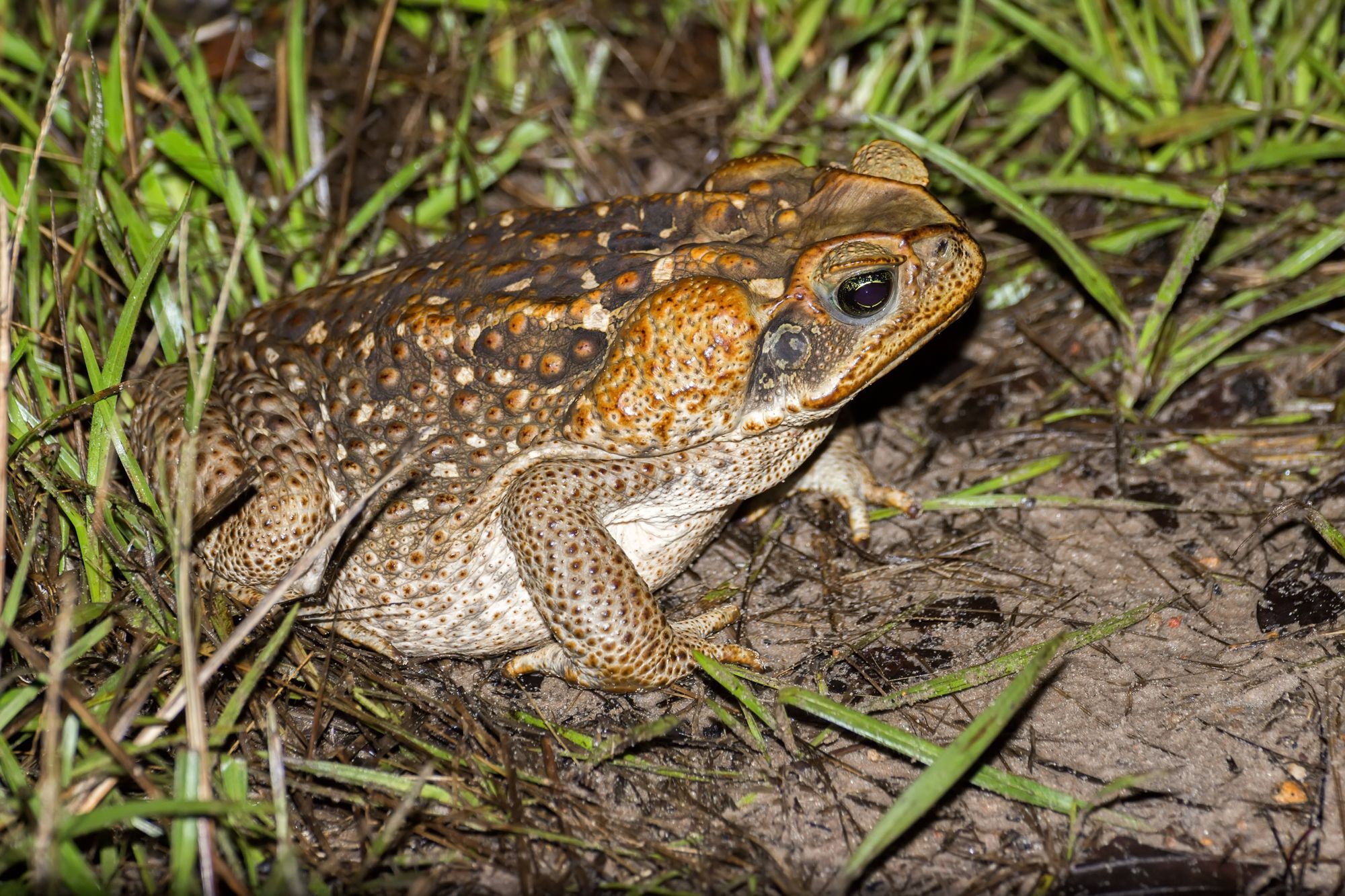
Florida in general, and south Florida in particular, have become a well-known hotspot for non-native invasive species. Our subtropical climate provides an excellent territory for introduced species to gain a foothold. The most famous, or infamous, of these is probably the Burmese python which has infiltrated the Everglades. However, in terms of a problem species that people deal with on a regular basis, the cane toad may be the nastiest.
Cane toads are a species of large, terrestrial frog (the question 'what is the difference between a frog and a toad?' is an odd one, because toads are a subgroup of frogs) native to South and Central America. It was introduced to Florida and the Caribbean primarily for pest control to protect sugarcane plants. They were also introduced into Australia and Hawaii.
Problems arose because no natural predators for the cane toad exist here, and their defenses are so formidable that only a handful of species have adapted to be able to feed on them. A cane toad's skin is toxic, and they also possess a large parotoid gland (the bump behind the eardrum) on each side of their head. These glands secrete a milky-white fluid that is highly poisonous if ingested.

While this is less of a threat to a full grown adult human, be sure to keep an eye on your pets who might try to lick or bite the toad, as well as on small children who don't know not to pick them up.
In addition to the problems they have caused potential predators, they have also started competing with, and even eating, our native Florida frogs (the cane toad is a generalist eater and will consume any animal it can catch and swallow).
So what's to be done about the cane toad? Florida FWC recommends killing them, but even if you aren't squeamish about such an action, it hardly puts a dent in their population. Control and removal of their tadpoles from nearby ponds is more efficient, though should be left to professionals who know what to look for. If you live in a gated community and have seen cane toads, bring it up with your HOA and see if you can work on a plan to remove them.
Completely getting rid of any introduced species is a difficult task once it's established itself, so the cane toad will likely be with us here in south Florida for the foreseeable future, so be on the lookout and remain cane toad careful for the safety of your pets and young children.